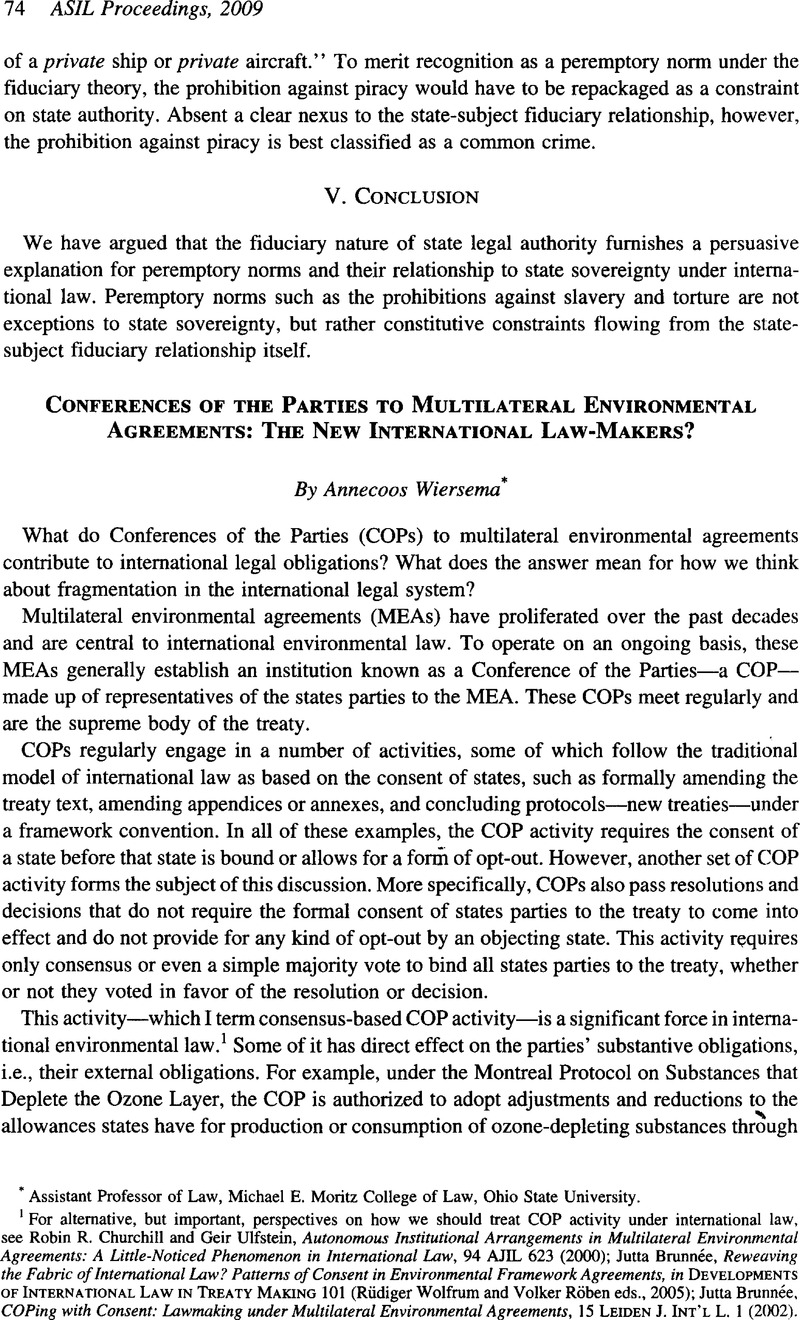Published online by Cambridge University Press: 28 February 2017

1 For alternative, but important, perspectives on how we should treat Cop activity under international law, see Churchill, Robin R. and Ulfstein, Geir, Autonomous Institutional Arrangements in Multilateral Environmental Agreements: A Little-Noticed Phenomenon in International Law, 94 AJIL 623 (2000)CrossRefGoogle Scholar; Brunnée, Jutta, Reweaving the Fabric of International Law? Patterns of Consent in Environmental Framework Agreements, in Developments of International Law in Treaty Making 101 (Wolfram, Rüdiger and Roben, Volker eds., 2005)Google Scholar; Brunnée, Jutta, Coping with Consent: Lawmaking under Multilateral Environmental Agreements, 15 Leiden J. Int’l L. 1 (2002)CrossRefGoogle Scholar.
2 Montreal Protocol on Ozone-Depleting Substances art. 2(9), Sept. 16, 1987, 26 ILM 1541, amended text available at <http://www.unep.org/ozone/pdfs/Montreal-Protocol2000.pdf>.
3 For example, the COPs of the Ramsar Convention on Wetlands have passed numerous resolutions adopted by simple majority of the parties interpreting key terms of the treaty, arguably changing the emphasis of the treaty. See Convention on Wetlands of International Importance Especially as Waterfowl Habitat, Feb. 2 1971, T.I.A.S. No. 11, 084, 996 U.N.T.S. 245 [hereinafter Ramsar Convention]; Wiersema, Annecoos, A Train Without Tracks: Re-Thinking the Place of Law and Goals in Environmental and Natural Resources Law, 38 Envtl. L. 1239, 1291 (2008)Google Scholar.
4 See Convention on International Trade in Endangered Species of Wild Flora and Fauna, Mar. 3, 1973, 27 U.S.T. 1087; Criteria for Amendment of Appendices I and II, Conf. 9.24 (Rev. CoP 14), 9th Meeting of the Conference of the Parties to Cites (Nov. 7-18, 1994), amended at the 14th Conference of the Parties to Cites (Jun. 3-15, 2007).
7 Brunnée, Reweaving the Fabric, supra note 1, at 111.
6 See Natural Resources Defense Council v. Environmental Protection Agency, 464 F.3d 1 (D.C. Cir. 2006); Jonathan Verschuuren, Ramsar Soft Law is Not Soft At All, available at <http://www.ssrn.com/abstract=1306982> (copy on file with author).
7 On sectoral fragmentation, see Fischer-Lescano, Andreas and Teubner, Günther, Regime-Collisions: The Vain Search for Legal Unity in the Fragmentation of Global Law, 25 Mich. J. Int’l L. 999 (2004)Google Scholar.
8 Vienna Convention on the Law of Treaties art. 31, May 23, 1969, 1155 U.N.T.S. 331.